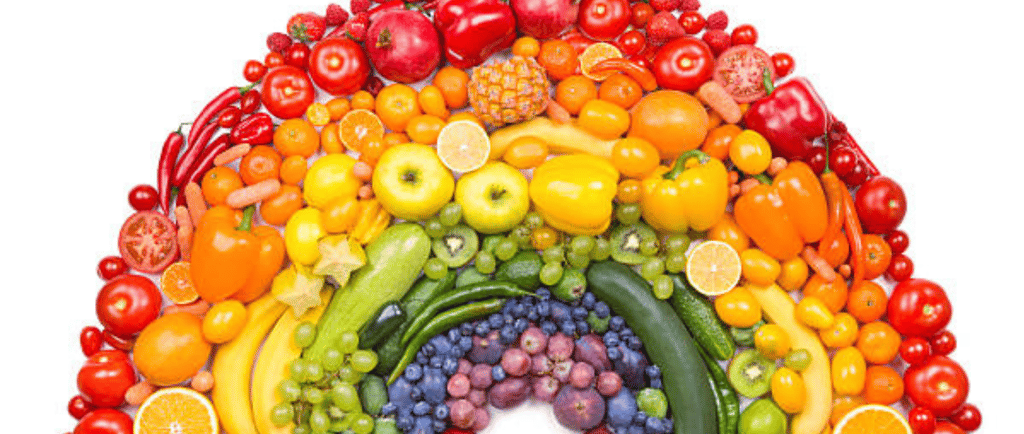Eating the rainbow : how incorporating a variety of colourful foods supports overall health


In the world of nutrition, colors aren't just for aesthetics; they represent a vibrant spectrum of nutrients and health benefits. Eating the rainbow, the concept of incorporating a variety of colorful fruits and vegetables into your diet, is a simple yet powerful approach to achieving optimal health and well-being.
The Nutritional Symphony of Colorful Foods
Colorful fruits and vegetables are nature's nutritional powerhouses, packed with an array of phytonutrients, the plant compounds responsible for their vibrant hues. These phytonutrients act as antioxidants, protecting our cells from damage caused by free radicals, and play a crucial role in various bodily functions.
Red Fruits and Vegetables:
Lycopene: Found in tomatoes, red peppers, and watermelon, lycopene is a potent antioxidant linked to a reduced risk of heart disease, certain cancers, and macular degeneration.
Anthocyanins: Abundant in berries, red grapes, and cherries, anthocyanins are antioxidants with anti-inflammatory properties that may help protect against cognitive decline and chronic diseases.
Orange and Yellow Fruits and Vegetables:
Beta-carotene: Richly present in carrots, sweet potatoes, and cantaloupe, beta-carotene is converted to vitamin A in the body, supporting healthy vision, immune function, and cell growth.
Vitamin C: Found in citrus fruits, bell peppers, and pineapples, vitamin C is a crucial antioxidant that promotes collagen production, strengthens the immune system, and aids in iron absorption.
Green Fruits and Vegetables:
Lutein and Zeaxanthin: These antioxidants, concentrated in leafy greens like kale, spinach, and broccoli, protect the eyes from age-related macular degeneration.
Iron: Essential for carrying oxygen throughout the body, iron is abundant in dark leafy greens, beans, and lentils.
Purple and Blue Fruits and Vegetables:
Anthocyanins: Similar to red fruits and vegetables, purple and blue fruits, such as blueberries, blackberries, and eggplant, are rich in anthocyanins with anti-inflammatory and cognitive-protective benefits.
Resveratrol: Found in grapes, red wine, and peanuts, resveratrol is a powerful antioxidant linked to reduced inflammation, improved heart health, and potential anti-aging effects.
Incorporating the Rainbow into Your Diet
Eating the rainbow doesn't require drastic changes to your diet; it's about making conscious choices to include a variety of colorful fruits and vegetables. Here are some tips:
Add Color to Salads: Enhance your salads with a rainbow of colors, incorporating a variety of fruits and vegetables like berries, bell peppers, cucumbers, and carrots.
Embrace Colorful Snacks: Replace processed snacks with colorful options like fruit platters, vegetable sticks with hummus, or roasted chickpeas.
Explore Colorful Recipes: Experiment with new recipes that feature colorful ingredients, such as stir-fries, vegetable curries, or fruit salads.
Make It a Habit: Aim to consume a variety of colorful fruits and vegetables daily, ensuring you get a balanced intake of nutrients from all color groups.
NutriAB's: Your Guide to Vibrant Nutrition
As a nutritionist, I am passionate about empowering individuals to make informed choices about their health and lifestyle. NutriAB's is dedicated to providing evidence-based nutritional counseling and support to help individuals achieve their health and well-being goals.
Embrace the rainbow and unleash the power of colorful foods. By incorporating a variety of vibrant fruits and vegetables into your diet, you can nourish your body with an array of essential nutrients, support your overall health, and experience the transformative impact of eating the rainbow.